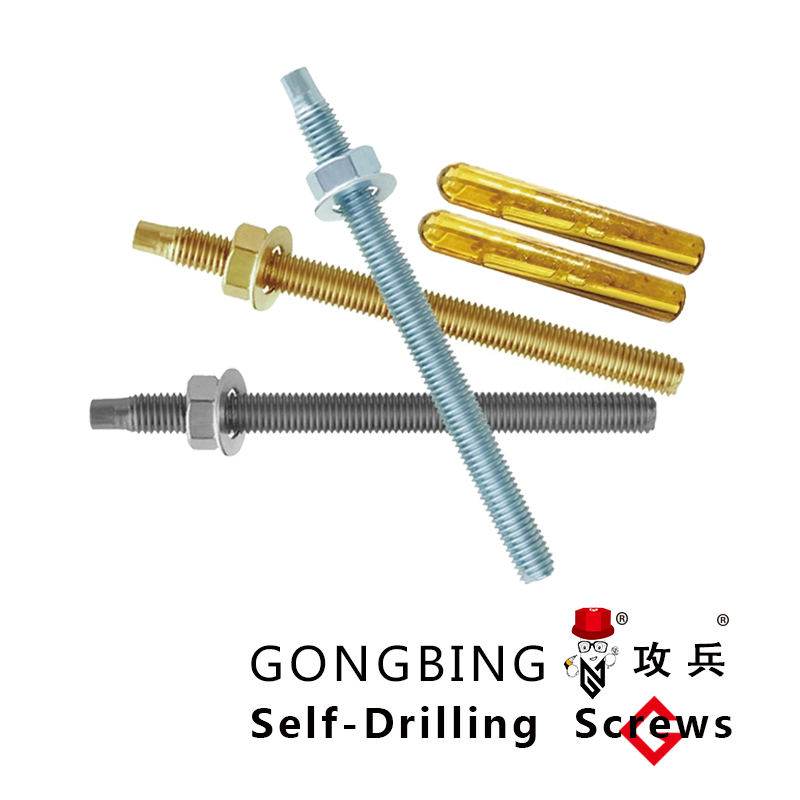Exploring Innovations in Wedge Expansion Anchor Technology for Enhanced Structural Support
Wedge Expansion Anchors A Revolutionary Approach to Structural Integrity
In the world of engineering and construction, the integrity and longevity of structures depend significantly on the quality of the anchoring systems used. One such innovative solution that has garnered attention is the wedge expansion anchor. This technology represents a substantial advancement in anchoring methods, providing enhanced performance and reliability in various applications, particularly in concrete structures.
Understanding Wedge Expansion Anchors
Wedge expansion anchors are specialized fasteners used primarily in concrete and masonry materials. They consist of a cylindrical body with a tapered wedge mechanism that expands when the bolt is tightened. This design allows the anchor to securely grip the surrounding material, thus providing a robust hold.
The basic components of a wedge expansion anchor include the body, the wedge, and a threaded portion for the bolt. When the bolt is turned, it pulls the wedge along the tapered section of the anchor, causing it to expand against the sides of the drilled hole in concrete or masonry. This expansion creates friction, which helps to distribute the load and resist withdrawal, making it an ideal choice for heavy-duty applications.
Advantages of Wedge Expansion Anchors
One of the most significant advantages of wedge expansion anchors is their high load-bearing capacity. They can withstand substantial forces, making them suitable for a variety of structural applications, such as securing machinery, hanging equipment, or even supporting structural elements in buildings.
Another advantage is their quick and easy installation process. Unlike other types of anchors that may require complex procedures or additional tools, wedge expansion anchors can be installed using standard tools, saving time and reducing labor costs. The installation process is straightforward drill a hole, insert the anchor, and tighten the bolt.
Moreover, wedge expansion anchors offer excellent resistance to shear and tensile loads, which is crucial in ensuring the stability of structures under various stresses. The ability to manage both vertical and horizontal forces makes them versatile for several construction and industrial applications.
wedge expansion anchor

Applications in the Industry
Wedge expansion anchors are widely used across various industries. In construction, they are employed for securing steel beams, columns, and trusses to concrete foundations. Their high load capacity is essential in high-rise buildings, where structural integrity is paramount. In manufacturing, these anchors are used to fix machinery in place, ensuring safety and operational efficiency.
Additionally, wedge expansion anchors are popular in the installation of shelving systems, racks, and other weight-bearing structures in warehouses and retail environments. They are also utilized in outdoor applications, such as securing signs, fences, and playground equipment, where durability and reliability are crucial.
Considerations for Use
While wedge expansion anchors offer numerous benefits, certain considerations must be taken into account when selecting and installing them. The type of concrete or masonry material, the environmental conditions, and the load requirements all play a crucial role in ensuring the proper performance of the anchor.
It is essential to ensure that the anchor is appropriately sized for the application and that the installation follows manufacturer guidelines. Failure to adhere to these guidelines can result in reduced performance and safety hazards.
Conclusion
In conclusion, wedge expansion anchors represent a significant evolution in anchoring technology, providing unparalleled strength and reliability for a wide range of applications. With their ease of installation and high load capacities, they are becoming a preferred choice for construction professionals and engineers alike. As industries continue to seek innovative solutions to enhance structural integrity, wedge expansion anchors will undoubtedly play a pivotal role in shaping the future of construction and engineering practices. Their design not only reflects a commitment to safety and efficiency but also highlights the relentless pursuit of excellence in the field of structural engineering.
-
Weatherproof Plastic Expansion Anchors for OutdoorNewsJun.06,2025
-
Sustainability in the Supply Chain: Eco-Friendly TEK Screws ProductionNewsJun.06,2025
-
Load-Bearing Capacity of External Insulation FixingsNewsJun.06,2025
-
Double Head Bolts: Enhancing Efficiency in Industrial MachineryNewsJun.06,2025
-
Corrosion Resistance in Chipboard Screws: Coatings for Wholesale DurabilityNewsJun.06,2025
-
Butterfly Toggle Bolts : Enhancing Structural ResilienceNewsJun.06,2025
